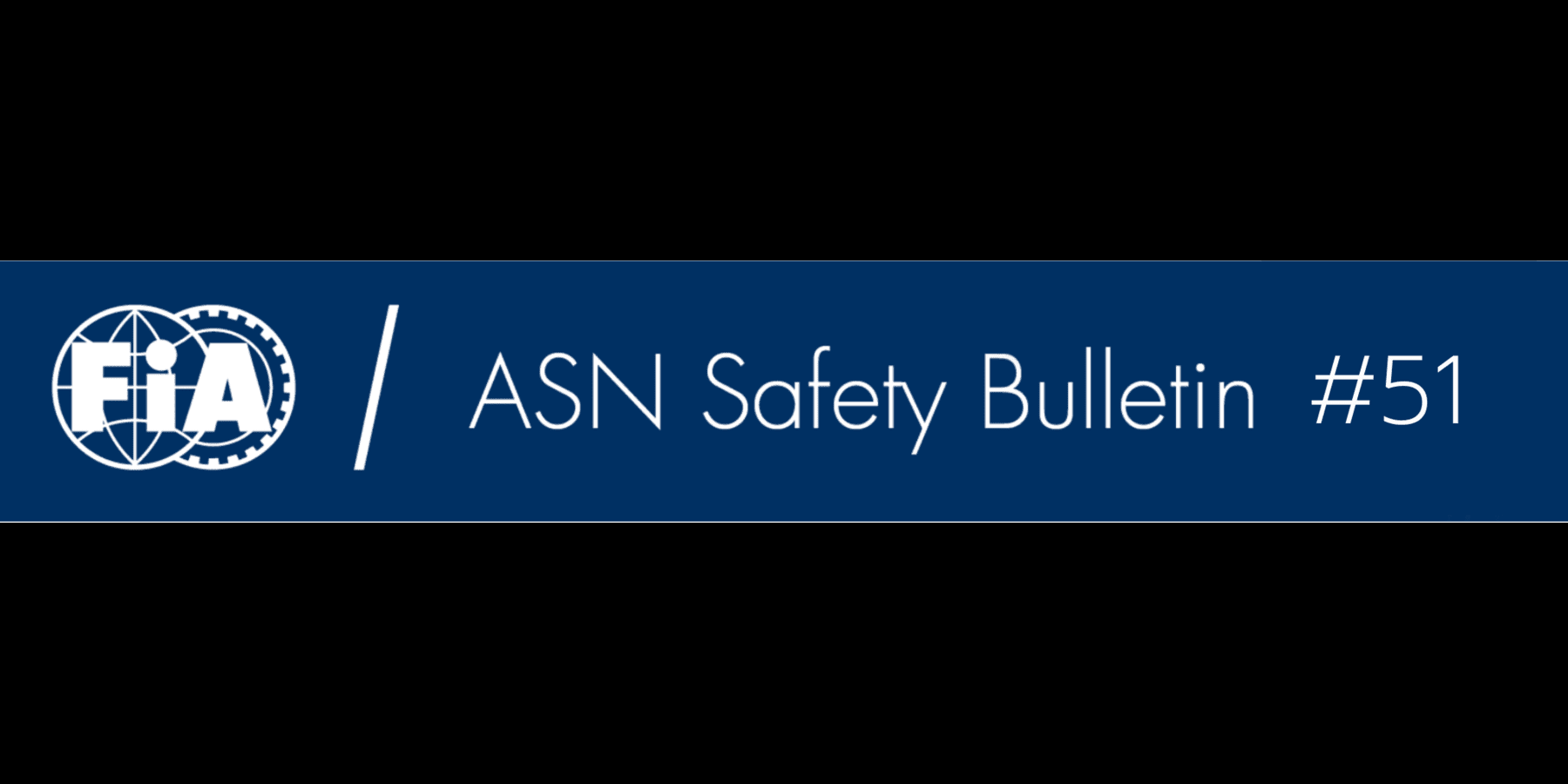FIA Rally Safety Guidelines 2025
07 Jul 2025 > Safety Bulletin
Dear Colleagues,
Welcome to Issue #51 of the ASN Safety Bulletin.
In this edition, we want to inform you that as part of the FIA's continued commitment to improving safety in motor sport, we have released the 2025 edition of the FIA Rally Safety Guidelines, available on the FIA website in multiple languages (🇬🇧, 🇪🇸, 🇫🇷, 🇩🇪, 🇮🇹 and 🇵🇹).
Building on previous editions, these Guidelines incorporate the latest best practices with the aim of supporting rally organisers at regional and national rally levels.
For 2025, the following updates have been made:
Water Hazards
We have reinforced recommendations regarding water hazards. A risk that, while not always visible, can have life-threatening consequences. Water hazards such as rivers, lakes, flooded areas or especially ditches may appear manageable but pose a high risk of cars becoming submerged or crews trapped, especially if the incident is not immediately visible to marshals.
Even low-depth bodies of water can be a hazard if cars land upside down. In addition, any body of water may be affected by extreme weather (e.g. heavy rain or flooding) and must therefore be closely monitored as its depth and reach can change rapidly, increasing the risk to both competitors and spectators.
To reduce these risks, organisers are encouraged to:
- Avoid routes near significant water hazards wherever possible.
- Assess depth, accessibility, and proximity to the track.
- Avoid water-adjacent stages at night.
- Ensure crews have accessible harness-cutting tools.
- Implement risk mitigation measures, such as:
- Physical protections (e.g. earth bunds, concrete barriers)
- Dedicated marshals assigned to the hazard area
- Deploying divers and a rescue boat, when appropriate
This update serves as a reminder that, while water may appear harmless, it requires proactive safety planning to ensure the safety of competitors, officials, and spectators.
Chicane Profiles
Clarification has been made to the recommended chicane profile to promote greater consistency across events. The updated guideline specifies a 10-metre separation between obstacles, measured from the outer edge of each bale. This adjustment aims to eliminate variations caused by differing bale sizes. Consistent obstacle layout plays a key role in reducing risks associated with unpredictable or non-uniform chicane setups.
New guidance specifies that any promotional arches placed on stages must now be documented within the event’s Safety Dossier. This ensures their correct positioning compliance with safety protocols.
Bringing the Safety Plan to Life on the Stage
A well-prepared safety plan is only effective if it is implemented exactly as intended on the terrain. Every marshal position, barrier placement, or restricted zone is defined for a reason. Even small deviations can lead to serious consequences in critical situations. Ensuring that the plan is followed precisely during setup and throughout the event is essential to protect spectators, competitors, media and officials. Organisers should put in place clear instructions, adequate supervision, and validation checks to ensure that the defined safety measures are correctly implemented on the ground. A strong, well-executed plan is what turns good preparation into real-world safety and protection.
Spectator Zones: Why 'No Tape – No Go' Matters More Than Ever
Spectator safety remains one of the most critical concerns in motor sport, as a significant proportion of serious accidents in rallying have involved spectators. This is why the FIA continues to strengthen its safety recommendations in this area, based on both incident analysis and observed best practices in the field.
One of the key principles to support spectator safety is the "No Tape – No Go" policy. This principle helps ensure that only clearly marked and supervised spectator areas are used, preventing uncontrolled crowd presence in potentially dangerous zones. Any area not marked by official barrier tape or signage must be considered as No Go. Even areas that appear visually safe may present unacceptable risks if not properly evaluated and controlled. Instead of No Go areas, consider adding more spectator zones. This will help manage the crowd more effectively by providing safe locations for them to gather.
In support of this, the FIA now strongly recommends avoiding using red tape to define danger zone. It is commonly misunderstood by the public who often stand behind it without considering that this colour marks a danger or exclusion zone. Events that have adopted well-defined spectator zone markings in line with the "No Tape – No Go" policy have reported significant improvements in crowd behaviour and spectator positioning.
Well selected, correctly marked and enforced spectator zones, combined with effective communication before and during the event, reduces the need for last-minute evacuations and lowers the risk of accidents. This also helps marshals and public order authorities in their ability to intervene efficiently.
These measures are not only a matter of compliance — they are fundamental to building a shared safety culture, where organisers, marshals, and spectators all contribute to safer rally environments.
We kindly request your support to promote these updated Guidelines among your event organisers, officials, and volunteers.
Thank you for your continued commitment to improving safety across the sport.
Best regards,
FIA Safety Department
If you have any topics you would like us to cover in future bulletins please send your suggestions to the FIA Safety Department.
To read the other articles about the ASN Safety Bulletins, please visit the FIA website. You can also read by clicking here.


